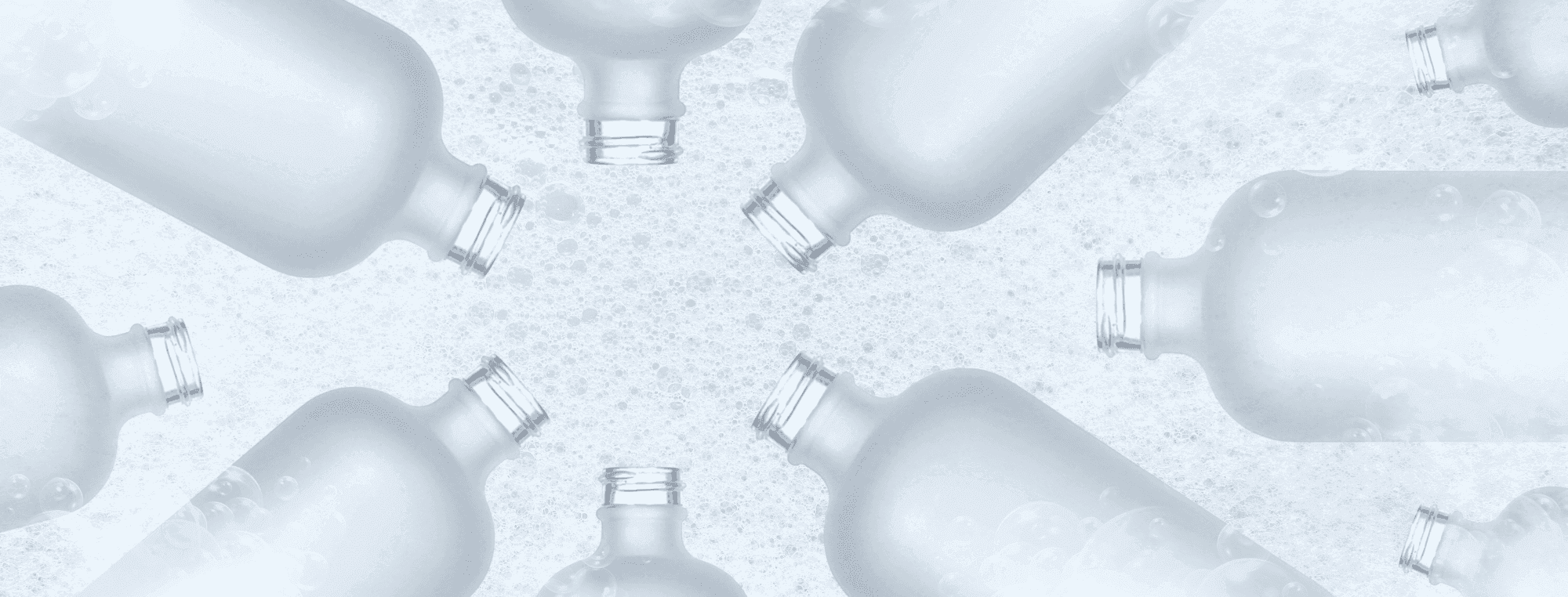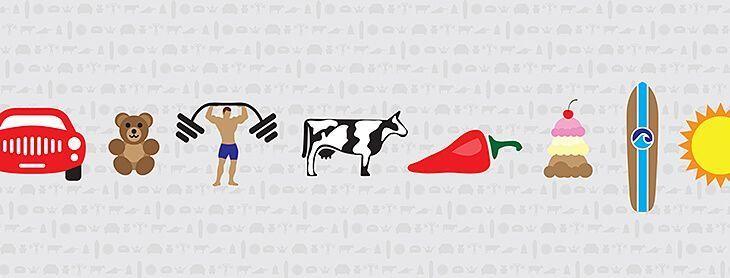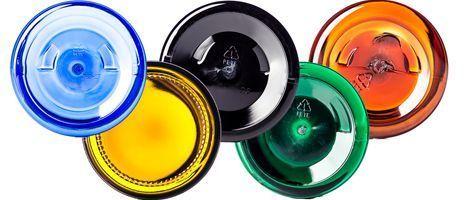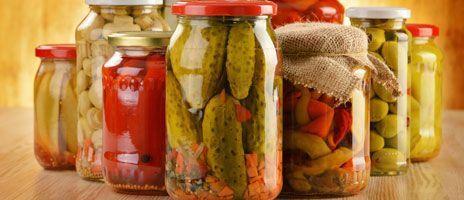How to Clean a Case of Packaging


If you clicked on this article, you likely have asked yourself, "How do I clean my product packaging?" Either that or you are one of those people who enjoys clicking random links on the internet and has happened to stumble across this blog post written by a packaging company. In either case, we are glad you are here, and we'll do our best to teach you everything you need to know about cleaning your packaging.
To start, products purchased with Container and Packaging are not manufactured, shipped, or stored in a sterile facility. So, depending on the packaging content and/or your specific usage, they may need cleaning or sterilization. While Container and Packaging is not responsible for product sterilization, we are happy to help you determine whether your packaging needs to be cleaned and guide you through some best practices for packaging sanitization. On a large scale, plastic can be sterilized using various methods, such as steam sterilization (autoclaving) and chemical sterilization. However, if you do not have access to such industrial processes and only need to sterilize a few cases of packaging, the cleaning methods below are likely a good option for you.
General Rules of Thumb
It is generally recommended that you wash any bottles, jars, or other packaging that will be used for products that are intended to go in or on a person's body. Sanitation is commonly required for products in the food and personal care industry. Washing the packaging will help ensure that it is clean and free of any contaminants that might affect your product's safety or quality.
There are different ways to clean the packaging, but a hot water and detergent solution is typically used, followed by a rinse with clean water. It is also usually necessary to thoroughly dry the packaging before filling it with your product. Before starting the cleaning process, it is best to ensure that your packaging is compatible with the cleaning method you plan to use – you can do this by looking up a container's specs and testing a sample.
Some materials may not be able to withstand high temperatures or certain chemicals. So it is important to research what will be best and test it out before washing an entire case.
With those general sanitation rules in mind, let's get into some specifics!
How to Clean Plastic Packaging

Plastic items are recommended to be washed using hot water and sanitizer, as opposed to being placed in the dishwasher due to dishwashers often heating up to 200 degrees Fahrenheit and surpassing the temperature tolerance for most plastic containers.
Great news! Glass items have a much higher temperature tolerance of up to 300 degrees Fahrenheit and can be placed in the dishwasher through the sanitization cycle to be properly sanitized.
Multiple filler companies that we are familiar with, such as Rainshadow labs, require the products to be sanitized before arrival. They will not perform a quality check of the containers.
Method for Cleaning Plastic
A quick soak is a universal way to remove dirt and debris and sanitize small and medium batches of plastic packaging. Here are a few quick steps to follow when cleaning your plastic containers.
- In a clean and sanitized sink, create a sanitation mix of 1 teaspoon per quart of warm water (or you can use vinegar instead at a 1-to-1 ratio of vinegar to water).
- Dunk and shake containers into this mix to ensure the solution is touching the entirety of the inside of the bottle.
- Sanitize for at least seven (7) seconds.
- Dry completely (air drying is recommended) before placing the lid on or filling the bottle to avoid bacterial growth.
How to Clean Glass Packaging

Due to the high-temperature tolerance of glass, there are multiple methods that you can use to clean containers made of this material. Here are a few ways to consider:
Method #1: Boiling Water
This method is excellent for canners who only need to sanitize a small batch of containers at a time.
- Use your water bath canning pot or any large pot.
- Place the jars on the canning rack or something that will keep the containers off the bottom of the boiling pot.
- Pour enough water to ensure all containers are completely immersed and filled with water, and add an extra inch of water above the landing of the tallest container.
- Bring the water to a boil and allow it to boil for 10 minutes at around 180-200 degrees Fahrenheit (NOTE: Do not put the glass in water that is already boiling. This can cause bad things… like exploding glass).
- After boiling, allow the water to cool a little before removing the containers.
- Carefully remove containers and place them upside down on a thick towel to dry.
- Dry completely before filling.
Method #2: Oven Heat
This is a super easy method for those who may not have a large pot or need to sanitize a larger quantity and want to be able to set a timer and not have to worry.
- Preheat your oven to 225 degrees Fahrenheit.
- Place the glass containers on a roasting pan or cookie sheet.
- Place them in the oven for 20 minutes.
- Allow the jars to cool to a safe temperature before filling (or the containers may shatter).
Method #3: Liquid sanitizer
Some people may prefer this method to ensure the items are also getting washed during the process to remove dust or debris. This is the same method used above for cleaning plastic containers.
- In a clean and sanitized sink, create a sanitation mix of 1 teaspoon per quart of warm water (or you can use vinegar instead at a 1-to-1 ratio of vinegar to water).
- Dunk and shake containers into this mix to ensure the solution is touching the entirety of the inside of the bottle.
- Sanitize for at least seven (7) seconds.
- Dry completely (air drying is recommended) before placing the lid on or filling the bottle to avoid bacterial growth.
Method #4: Dishwasher
This method is one of the simplest, but you need to make sure you are using a clean, quality dishwasher.
- Using a clean dishwashing machine that offers high-temperature washing and post-washing sanitation, place your glass containers upside down on the wash racks and load them properly.
- Run the dishwasher as usual.
- Listen to the hum of the dishwasher and manifest within yourself an appreciation for modern technology.
- Let the cycle finish and cool before removing the containers and filling them.
The Caveats
These are only suggestions and starting points to help you figure out the best way to sanitize your packaging. Of course, you should always thoroughly research the specific cleaning rules for your product and packaging to ensure that you comply with industry and government regulations.
Container and Packaging is not responsible for product cleanliness, and it is your responsibility to clean items before use, depending on the use you intend for them. You are responsible for determining the sterility/cleanliness requirements for the product you intend to place within the purchased items. This information can also be found on our Policies and Terms page. That said, if you receive a shipment from Container and Packaging that has something wrong with it, please let us know, and we will work to make it right.
Closing Reminders
Remember, not all products require product sanitation and cleaning. But for the products that need it, make sure you take the necessary precautions to ensure that the packaging is clean and hygienic before filling it with your product to ensure the safety and quality of your product.




